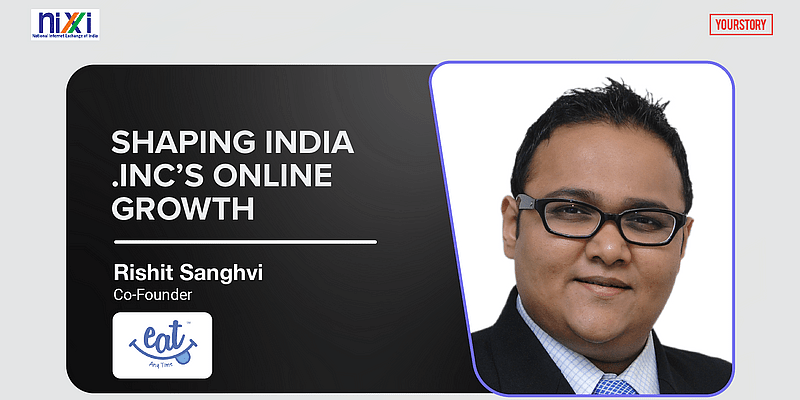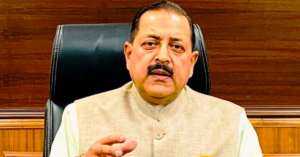We Indians love ‘snacking’ and all we need to do is tear open a packet of our favourite brand. New and old brands alike keep coming up with variations and innovations for new snacks, and it almost always works wonders in the market. But the global pandemic has made people more health-conscious as a result of which they are opting for healthier snacking options. Mumbai-based Eat Anytime aims to promote guilt-free healthy snacking options.
The startup was founded with the help of products that were made in a home kitchen. To provide products that are healthy yet tasty, Eat Anytime provides its customers with choices in the product categories of trail mixes, nutrition bars, cookies, munchies, and more.
Owned by Wholesome Habits Private Limited, which also owns Mindful, Eat Anytime has a presence in eight cities across India, with over 1,500 stores. Its products also have a consolidated presence in superstores and on e-commerce websites, apart from Eat Anytime’s website.
The back story
After having worked as a banker for almost a decade and a half, Rishit Sanghvi, CEO, Eat Anytime, realised how he had lost control over his lifestyle. While going through a massive transformative journey to change the choices that affected his health directly, Rishit used to make granola bars for his daughter. As word spread slowly, friends and family started reaching out to him and his wife Prachi Sanghvi, a nutritionist and the co-founder of the brand, asking them for recipes or to make healthy bars for their kids. This inspired them to start Eat Anytime.
The turning point came in 2016 when Rishit and Prachi participated in an exhibition in Mulund, where they received about 400 kgs of order for their products. Starting with products that were made in a home kitchen, Eat Anytime eventually moved to industrial production within six-seven months, once the recipes were finalised.
Market for healthy options
Indians have always been fond of snacking, and an industry that’s valued at more than Rs 80,000 crore according to reports, is a testament to the fact. But only a minuscule part of it is occupied by healthy snacking, according to Rishit. “The majority of share is towards junk food, when it comes to chocolates, biscuits, wafers, etc. So there is a huge gap in terms of being mindful, where you create healthier options, which are also tasty,” he says.
Given the size of the market, competition never proved to be a hindrance for Eat Anytime. Rishit says that competition is good because everyone is trying to do the same thing with the set of target audience they have, and showing them how healthy can be tasty as well. But, one mission has been very clear for Eat Anytime – defining health. In a generation where every brand has been innovating with their respective versions of what healthy is, Rishit says that the first task at hand for people at Eat Anytime was to make sure they defined health correctly.
There are three core pillars the startup strictly adheres to while designing its products. First, no refined sugar is added to any of its products. Second, only complex carbs are used, making sure that the products are low in glycemic load, which in turn boosts metabolism. Third, they ensured that the intake of protein is increased in a protein-deficit country like India, and balanced the nutrition of the products in a way that it contained adequate protein, fat, and carbohydrates.
The products of Eat Anytime come in interesting flavours, and that is what makes the brand appealing to customers. “We have a healthy butterscotch bar, we’ve got a peanut butter bar, we’ve got a cranberry bar. We have come up with a set of protein cookies, where if vegetarians eat one cookie, it gives them the protein equivalent of one egg. So there is a philosophy with which we launch products, and it is communicated very well to our consumers, and they have been very appreciative. That’s what sets us apart from other competition,” he adds.
Going online
Taking the business online was always a priority for the founders of Eat Anytime, but the D2C ecosystem was not evolved in 2016. This was why they started to focus on e-commerce marketplaces like Amazon, Flipkart, and Nykaa initially. Apart from that, they also approached the more prominent and traditional channels like superstores and local stores to sell their products. Not before long, the D2C ecosystem started showing positive signs, and they decided to start selling from their website.
It all changed in early 2018, with an ecosystem boom in launching D2C businesses. The shipping costs became equal to what prominent e-commerce marketplaces charged, and hence the founders decided that it was time for them to push their products through their website. In the last year, they have been focused on growing their D2C business through their website very strongly.
Truly Indian
Rishit and Prachi always wanted to serve the Indian consumers, and the .in domain was a natural option. The target audience based in India also made sure that the discovery of the website was neutral, even with the .in domain.
Just like Eat Anytime, many such brands who have targeted the Indian audience specifically have benefitted largely from the .in extension. With the help of the National Internet Exchange of India (NIXI), it has become very easy for enterprises to avail themselves of a .in or .Bharat domain, which in turn helps them grow their businesses considerably. Not only is it affordable, but it can also be availed in 22 Indian languages.
Once the brand established its presence in the digital domain, the numbers started to speak for themselves. While Amazon and Flipkart were the major volume drivers up until last year, the amount of traffic on their website has grown substantially since then, according to Rishit.
“We are glad to know that we have concentrated on our website to an extent that now it contributes equivalent in business to what Amazon and Flipkart do to us. As we speak, we have three channels, our website does one-third of the business, Amazon does one-third, and the other website does one-third. We see that our website has the potential to beat any of these marketplaces. But it is a journey that has to go through a learning curve,” Rishit adds.









